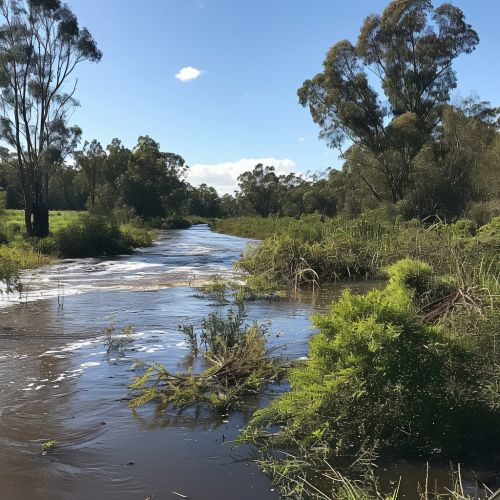Flood Risk Management
Introduction
Flood risk management refers to the systematic process of identifying, assessing, and reducing the risks associated with flooding. This involves a combination of physical measures, such as dykes and flood barriers, and non-structural measures, such as land use planning and flood forecasting systems. The goal of flood risk management is to reduce the human and economic losses caused by flooding while taking into account the benefits of flooding and the natural and cultural values of floodplains.
Understanding Flood Risk
Flood risk is typically understood as a function of the probability of a flood event and the potential consequences of that event. The probability of a flood event is determined by factors such as rainfall, river flow, tidal-surge, and the capacity of the ground to absorb water. The potential consequences of a flood event include damage to property, loss of life, and disruption to communities and economies.


Flood Risk Assessment
Flood risk assessment is a key component of flood risk management. It involves the identification of flood hazards, the analysis of flood risks, and the evaluation of flood risk management measures. The assessment process includes the collection and analysis of data on flood hazards, the exposure and vulnerability of people and property to these hazards, and the effectiveness of existing flood risk management measures.
Flood Risk Reduction
Flood risk reduction involves the implementation of measures to reduce the probability of flooding and/or the potential consequences of flooding. These measures can be structural, such as the construction of dykes and flood barriers, or non-structural, such as land use planning and flood warning systems.
Structural Measures
Structural measures are physical constructions designed to prevent flooding or to reduce the impact of floods. They include dykes, flood barriers, reservoirs, and flood bypass channels. These measures are often expensive and can have significant environmental impacts, but they can be effective in reducing flood risks.
Non-Structural Measures
Non-structural measures are strategies and policies designed to reduce flood risks without altering the physical environment. They include land use planning, flood forecasting and warning systems, and community education programs. These measures are often less expensive and less environmentally damaging than structural measures, but they require a high level of community involvement and cooperation.
Integrated Flood Risk Management
Integrated flood risk management is a holistic approach that combines structural and non-structural measures, and takes into account the social, economic, and environmental dimensions of flood risk. This approach recognizes that flood risk management is not just about preventing floods, but also about managing the way we live with floods.
Challenges in Flood Risk Management
Flood risk management faces a number of challenges, including climate change, urbanization, and socio-economic factors. Climate change is expected to increase the frequency and intensity of extreme weather events, including floods. Urbanization increases flood risk by reducing the capacity of the land to absorb water. Socio-economic factors, such as poverty and lack of education, can increase vulnerability to floods.
Conclusion
Flood risk management is a complex and challenging task that requires a combination of structural and non-structural measures, and a holistic approach that takes into account the social, economic, and environmental dimensions of flood risk. Despite the challenges, effective flood risk management can significantly reduce the human and economic losses caused by flooding.
